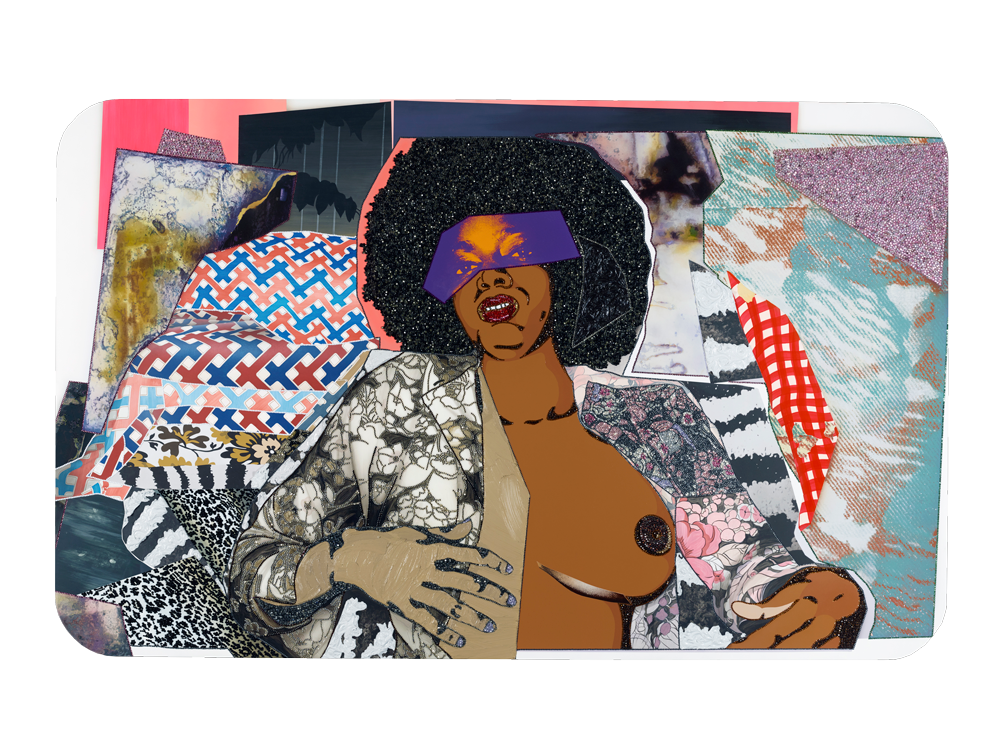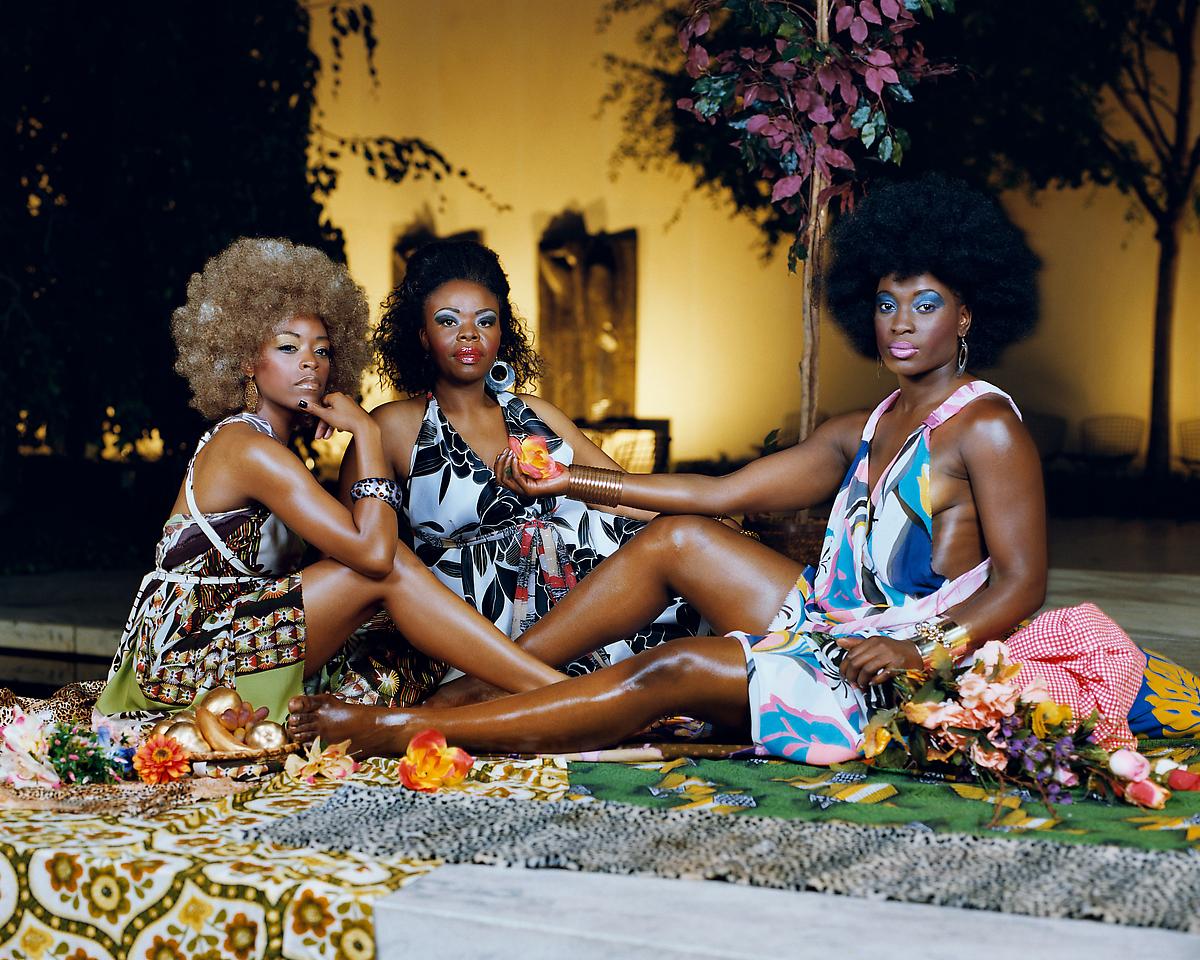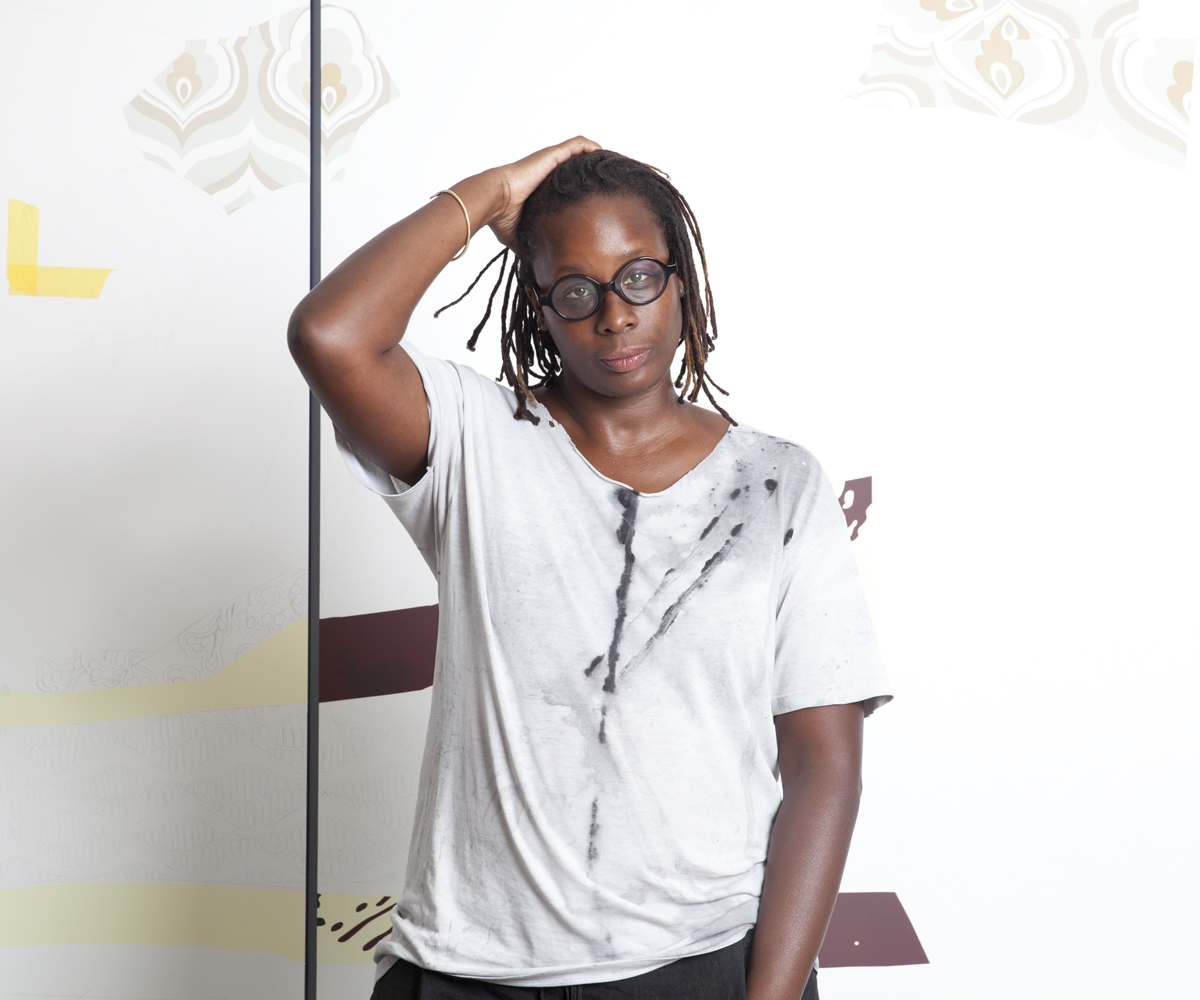Female Genius: Mickalene Thomas

Mickalene Thomas is best known for her vivid collage paintings, photographic tableaux, and period-inspired installations. The visual artist hails from New Jersey, a place that largely informs her artistic vision. A characteristic motif of her work is the domestic interior space of leisure—living rooms and recreational rooms—often shown with a black woman or a group of black women in repose at the center. Dizzying combinations of patterns, materials, and angles, always with a retro vibe, animate these compositions, whether in painting or photography. The 44-year-old also makes installations, such as Better Days at Art Basel 2013, for which she transformed the Volkshaus Galerie into a period party pad complete with faux wood paneling and 1960s/70s-style wallpaper and furniture, inviting performers such as Solange and D.J. YSL to hold sessions there. Better Days was Thomas’s reinterpretation of the house parties her mother—who is also her muse and sometime model—used to throw in their East Orange apartment in the 1970s. “I’m interested in the kinds of materiality that make cultural reference to my personal African-American social history, specifically the experience of African-Americans from northeastern cities,” she explains. “I imagine the spaces from earlier in my life: my grandmother’s house, my aunt’s house, my uncle’s house, my mother’s house. My interiors partly reflect my nostalgia for how I lived.”

There is also an international dimension to Thomas’s work. At a recent conference entitled Black Portraiture{s} II: Imaging the Black Body and Re-Staging Histories, which was hosted at NYU’s Villa La Pietra in Florence, Italy, Thomas sat on a panel to discuss her involvement in “Art in Embassies,” a program organized by the American government that commissions artists to contribute existing pieces or create site-specific work at U.S. embassies and ambassadors’ residences around the world. Thomas’s paintings have been hung in Khartoum, Sudan, and the New York residence of Susan Rice during her tenure as U.S. Ambassador to the United Nations, while in November she’ll be unveiling her most ambitious “Art in Embassies” project yet: a one-hundred-foot-long mural mosaic on the façade of the recently constructed embassy compound in Dakar, Senegal. “The mural is being made in three places: upstate New York, Italy, and Dakar,” she said. “That was really important to me.”
The Florence conference’s international roster of participants also included artists, academics, and art professionals such as Lyle Ashton Harris and Carrie Mae Weems, whom Thomas regards as a mentor. Chirlane McCray, wife of New York Mayor Bill de Blasio, was also present, as was Pap Khouma, the Italo-Senegalese author whose 1990 autobiographical novel I Was an Elephant Salesman, a bestseller in Italy, describes the precarious existence of African migrant street sellers in the peninsula. Looking around the conference, Thomas was struck, she says, by the timeliness of the gathering. Along Italy’s southern coastline the crisis of black and brown trans-Mediterranean migrants was intensifying, placing the conference in dialogue with a contemporaneous reality of black experience in Italy and Europe. “What I find very powerful,” Thomas says, reflecting on the assembled company, “is the mini-dialogues among people of color from different perspectives. Hopefully what will happen is we will branch off into our own environments and take what we are learning, take what we are experiencing, take what we are falling in love with, what we are being inspired by, to our own communities and create the same dialogue and discourse. That’s the hope.”

This story originally ran in PIN-UP Magazine, Number 19. Special thanks to Eva Kenny.